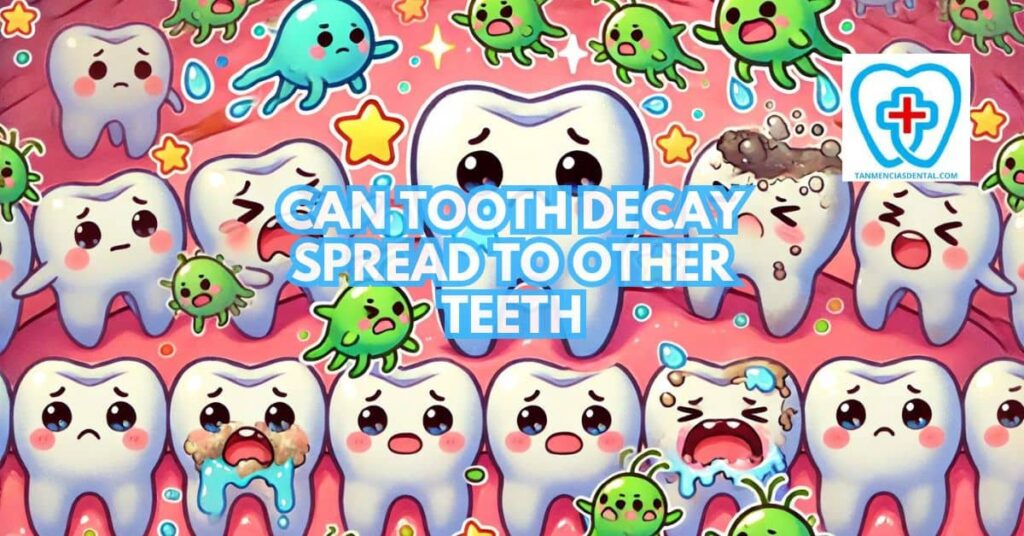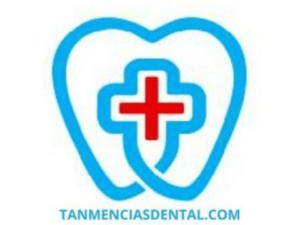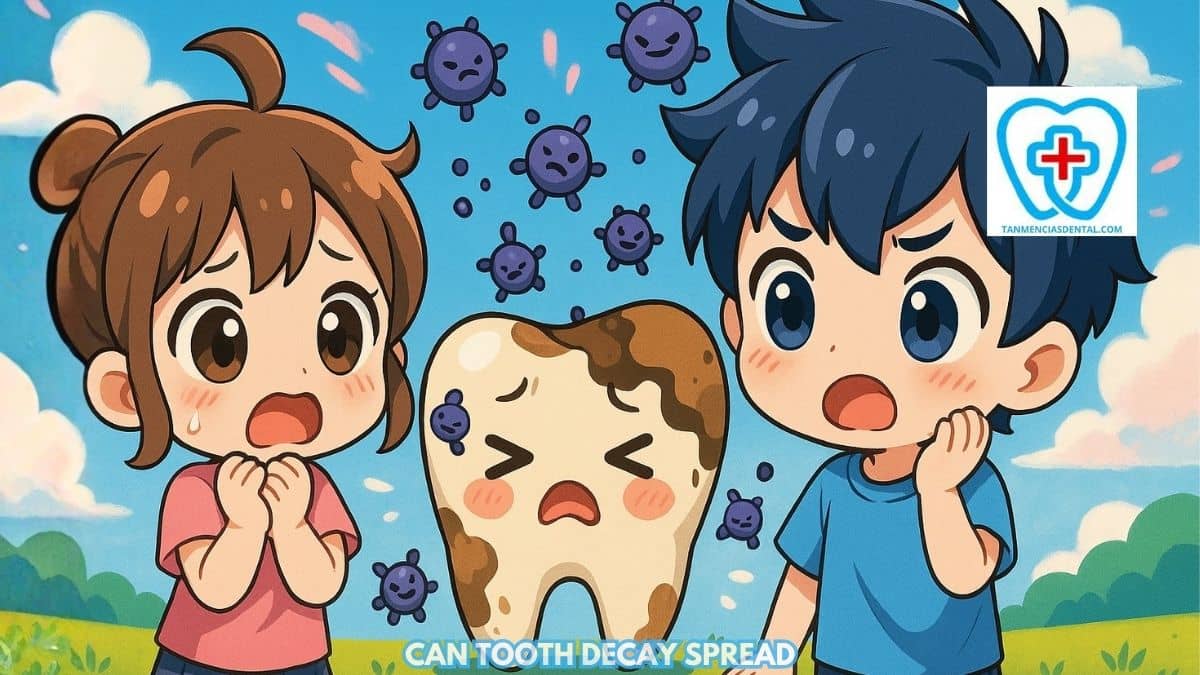Tooth decay happens when bacteria in the mouth produce acid that wears away the protective enamel of the teeth.
Many people wonder, can tooth decay spread from one tooth to another, and the answer is yes if the decay is not treated in time.
When harmful bacteria stay on the teeth, they can move to nearby areas and cause new cavities to form.
Poor brushing, sugary foods, and irregular dental visits can make this process happen faster.
Understanding how tooth decay spreads and how to stop it can help protect your teeth and keep your mouth healthy.
1. How Bacteria Can Spread Within Your Mouth
The mouth contains many kinds of bacteria, including both helpful and harmful ones.
Among the harmful types, Streptococcus mutans is one of the main cavity-causing bacteria that leads to tooth decay.
These bacteria can easily move around the mouth, spreading from one tooth to another and even reaching the gums.
They thrive on leftover sugars and starches from food, producing acids that weaken and wear down tooth enamel.
When brushing and flossing are neglected, Streptococcus mutans and other bacteria multiply quickly, forming sticky layers of plaque on the teeth.
Over time, this buildup creates an ideal environment for more decay to develop.
Sharing items like utensils, toothbrushes, or even kissing can also transfer these harmful bacteria between people.
Keeping a consistent brushing and flossing routine helps remove food particles and disrupt bacterial growth.
Regular dental checkups further protect the mouth by cleaning away plaque and stopping bacteria from spreading.
🦷 How Do Dentists Remove Braces Safely and Effectively?
2. The Process: How Cavities Form
Cavities develop when harmful bacteria in your mouth break down sugars from food, producing acids that erode tooth enamel.
The process starts with the bacteria digesting these sugars, leading to the release of acids that demineralize the enamel and create tiny holes.
If you don’t address these early signs by brushing and flossing regularly, the small holes can grow larger, allowing the decay to penetrate deeper into the tooth.
Once the decay reaches the dentin, the sensitive layer beneath the enamel, you may start to feel discomfort or pain.
If left untreated, the cavity can reach the pulp, where nerves and blood vessels are located, leading to severe pain and possible infection.
To avoid this, it’s important to visit your dentist regularly for checkups and cleanings.
Early detection can help stop the process before it becomes severe, protecting your teeth from permanent damage.
🦷 How Often Should You Get Routine Checkups At The Dentist?
3. Can Cavities Spread From Tooth to Tooth?
Cavities, while not directly transmissible, can indeed seem to “spread” from one tooth to another due to the movement of the bacteria that cause cavities.
These bacteria thrive on food particles and sugars left in the mouth, producing acids that wear away tooth enamel, leading to the early stages of tooth decay.
When oral hygiene practices are lacking, these bacteria find ample opportunity to attack adjacent teeth, particularly those in proximity where cleaning might not reach effectively.
This scenario is especially true for teeth with tight spaces between them, as these areas are more challenging to clean and offer a haven for cavity-causing bacteria to multiply.
To prevent cavities, it’s essential to maintain a regimen of thorough brushing at least twice a day and flossing daily to eliminate the food residues and plaque that these bacteria feed on.
Using fluoride toothpaste can also help strengthen tooth enamel, making it more resistant to decay.
Keeping a clean mouth environment and adhering to good oral hygiene practices are key strategies in preventing the spread of harmful bacteria and protecting your teeth from cavities.
🦷 How Do Dentists Remove Tartar Buildup Effectively?
4. Preventing the Spread of Cavity-Causing Bacteria
The most effective strategy to prevent the spread of cavity-causing bacteria involves maintaining a rigorous oral hygiene routine.
This includes brushing teeth at least twice a day with fluoride toothpaste, flossing daily to remove plaque from between teeth, and using an antibacterial mouthwash to kill bacteria.
Regular dental checkups are also crucial, as dentists can remove tartar, a hardened form of plaque that brushing alone cannot remove.
Limiting the intake of sugary foods and drinks can significantly reduce the food source for harmful bacteria, thus slowing their proliferation.
Replacing your toothbrush every three to four months is recommended to ensure that bacteria accumulation on the brush doesn’t contribute to the problem.
🦷 How to Choose the Best Dental Care Center for Your Family

5. The Role of Saliva in Spreading Bacteria
Saliva is a double-edged sword in oral health; while it helps in digesting food and keeping the mouth moist, it can also serve as a vehicle for bacteria to move around the mouth.
It contains enzymes that break down food particles, but these particles can feed bacteria if not properly cleaned away.
Saliva also neutralizes acids in the mouth, helping to protect teeth from decay, but sharing saliva through common utensils or kissing can spread bacteria.
To minimize the risk, it’s important to avoid activities that can lead to the exchange of saliva, especially with individuals who have poor oral hygiene.
Encouraging the use of individual cups, utensils, and oral products can help limit the spread of saliva-borne bacteria.
🦷 Building Community Partnerships through Dental Checkup Camps
6. How Your Diet Affects Cavity Formation
What you eat directly influences your risk of developing cavities.
Sugary foods and drinks, like candy and soda, provide fuel for bacteria in your mouth.
These bacteria produce acids that gradually wear down tooth enamel, leading to cavities over time.
Acidic foods, such as citrus fruits and vinegar-based products, can also weaken enamel, making teeth more vulnerable to decay.
To minimize the risk, it’s important to maintain a diet rich in vegetables, lean proteins, and dairy while cutting back on sugary snacks and acidic beverages.
🦷 Best Mouthwash For Gingivitis: What to Look For and Avoid
7. Everyday Habits and Health Factors That Help Cavities Spread
Certain health conditions and daily habits can make it easier for cavities to spread from one tooth to another.
When you experience dry mouth caused by medications, mouth breathing, or illness, your mouth produces less saliva to clean away food and neutralize acids.
This lack of moisture allows bacteria to stick to teeth and create more damage over time.
Smoking and vaping also make dry mouth worse by reducing saliva and blood flow, which helps bacteria grow faster.
Frequent snacking or sipping sugary drinks keeps sugar in the mouth longer, giving bacteria more time to produce acid that wears down enamel.
Making small changes, like drinking more water and avoiding habits that cause dry mouth, can help keep your teeth healthy and prevent cavities from spreading.
🦷 How Long Is A Dentist Appointment?
8. Can Tooth Decay Spread From Person to Person?
While tooth decay itself does not spread like the flu, the bacteria responsible for it can move from one person to another through saliva.
Many people ask, Are cavities contagious, and while the cavities are not, the bacteria that cause them can easily spread through saliva.
Sharing items such as eating utensils, toothbrushes, or drinks can allow these bacteria to transfer between people.
Kissing or cleaning a child’s pacifier with your mouth is another way harmful bacteria can spread through saliva.
Children are especially at risk because their teeth and enamel are still developing, making it easier for bacteria to cause damage.
Practicing good oral hygiene and avoiding saliva-sharing habits can help lower the chance of spreading these bacteria.
Teaching family members about these risks encourages healthier habits and keeps everyone’s teeth better protected.
🦷 Is It Bad To Brush Your Teeth With Baking Soda?
9. Cavity Care: Stopping Tooth Decay From Progressing
Early detection and treatment of cavities are essential to stop tooth decay from worsening.
Once a cavity is identified, a dentist can remove the decayed part of the tooth and fill the hole with a filling material to restore its shape and function.
For more advanced decay, treatments may include crowns, root canals, or even tooth extractions, followed by dental implants or bridges.
Implementing preventive measures, such as sealants on the molars, can also protect teeth from developing cavities in the first place.
Regular dental visits allow for early detection and management of tooth decay, preventing its progression and preserving oral health.
🦷 Why Routine Dental Treatments Are Key to Avoiding Dental Emergencies
10. Dental Care: Regular Checkups and Professional Cleanings
Regular dental visits are the cornerstone of preventing tooth decay and its spread.
These checkups allow dentists to identify early signs of decay and address them before they escalate.
Professional cleanings, performed by dental hygienists, remove plaque and tartar that regular brushing cannot, thus preventing the growth of cavity-causing bacteria.
Dentists also provide fluoride treatments, which strengthen tooth enamel and make it more resistant to decay.
Encouraging the habit of biannual dental visits for cleanings and checkups can significantly improve oral health and prevent the spread of decay.
🦷 Child Hates Brushing Teeth: Creating Positive Dental Habits
11. Family Dentistry: Educating on the Spread of Tooth Decay
Family dentists play a crucial role in educating both children and adults on how to prevent the spread of tooth decay.
They offer tailored advice on oral hygiene practices suitable for all ages, ensuring that every family member knows how to care for their teeth effectively.
By discussing the risks of sharing eating utensils and the importance of personal dental care items, dentists can help reduce the transmission of harmful bacteria within families.
Educational materials and discussions on diet, the role of sugar in tooth decay, and the importance of fluoride can empower families to make healthier choices.
Family dentistry focuses on preventive care, aiming to instill lifelong habits that minimize the risk of tooth decay.
12. What Happens If Tooth Decay Is Left Untreated?
Ignoring tooth decay can cause serious dental and overall health problems over time.
When cavities are left untreated, decay can move deeper into the tooth and reach the pulp, where the nerves and blood vessels are located.
This can result in severe pain, infection, and swelling around the affected area.
If the infection spreads or damages the tooth structure too much, it can lead to tooth loss and may require extraction.
In some cases, bacteria from untreated decay can enter the bloodstream and affect other parts of the body, increasing the risk of heart or systemic infections.
Seeking early treatment and following good oral hygiene habits can prevent these complications and protect you from pain and tooth loss.
🦷 Exceptional Dental Care at Tan-Mencias Clinic in Marikina
👨⚕️ Conclusion
Tooth decay is a prevalent issue that can lead to significant health problems if left unattended.
However, with proper oral hygiene practices, regular dental checkups, and professional cleanings, it is largely preventable.
Education on the spread of cavity-causing bacteria and the adoption of healthy habits can further mitigate the risk.
Family dentistry plays a vital role in providing the necessary knowledge and care to prevent tooth decay from spreading within families.
Ultimately, taking responsibility for one’s oral health and fostering good practices from an early age can safeguard against the spread of tooth decay, ensuring a lifetime of healthy smiles.
❔ FAQs
1. Can tooth decay spread from one tooth to another?
Yes, tooth decay can spread when bacteria move from an infected tooth to nearby teeth.
These bacteria produce acids that damage the enamel on surrounding teeth.
Brushing, flossing, and visiting the dentist regularly can help stop this spread.
2. How can I tell if tooth decay is spreading?
You may notice pain, sensitivity, or discoloration spreading to nearby teeth.
Food getting stuck between teeth or a persistent bad taste can also be warning signs.
Seeing a dentist early can prevent further decay and save affected teeth.
3. Can tooth decay spread from person to person?
The bacteria that cause tooth decay can be passed through saliva when sharing utensils or kissing.
While the decay itself is not contagious, the bacteria can increase someone else’s risk of cavities.
Avoid sharing toothbrushes or eating utensils to reduce this risk.
4. What habits make tooth decay spread faster?
Frequent snacking, sipping sugary drinks, smoking, and poor brushing can help bacteria grow quickly.
These habits create more acid and keep it in contact with teeth longer.
Drinking water and cleaning your teeth after eating can slow the spread.
5. What should I do if I already have a cavity?
If you have a cavity, see your dentist as soon as possible for treatment.
The dentist can remove the decay and fill the tooth to stop the damage from spreading.
Early care helps prevent pain, infection, and the loss of more teeth.
😁 Self-Promotion
Visit us at Tan-Mencias Dental Clinic, nestled in the heart of Parang, Marikina City, where your smile is our top priority!
Our team is dedicated to providing you with the personalized, gentle care that you deserve.
For any questions or to schedule your next visit, feel free to call us at 0917-145-1074, send a message through our Facebook page, or use the contact form on our website.
We’re here to ensure your dental health journey is as comfortable and convenient as possible.
Join our family at Tan-Mencias Dental Clinic, and let us be a part of your journey to a brighter, healthier smile!

